At their newest concept store at Plaza Singapura, ASICS has introduced their latest ASICS Foot ID system, and members of the media were invited to try it out for the first time.
ASICS new Plaza Singapura concept store is the first in South East Asia to reveal ASICS’ new branding concept, which features glass shelving with LED lighting to showcase the ASICS range of more than 50 different styles of ASICS shoes, all visible to passers-by. The new concept creates a space to engage both a sound mind and sound body through both innovative exploration and technical production.
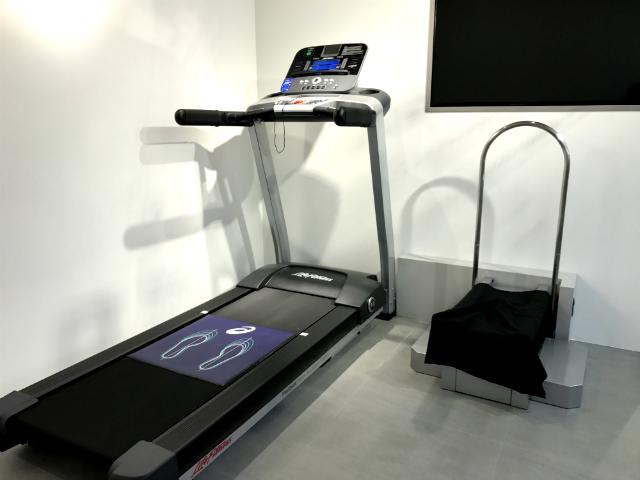
ASICS’ revolutionary Foot ID system.
Foot ID can improve your running
And also, according to ASICS, having Foot ID done is important because biomechanics analysis, together with the right running shoe, can drastically improve your running.
The new Foot ID system is an enhanced 3D analysis of the customer’s running form via a simple camera. Information such as arch height and the alignment of the Achilles with the leg, can be obtained from the Foot ID scan, and the information is then assessed and analysed – to find the perfect pair of running shoes and at the same time, to get to the root of any recurring running injuries.
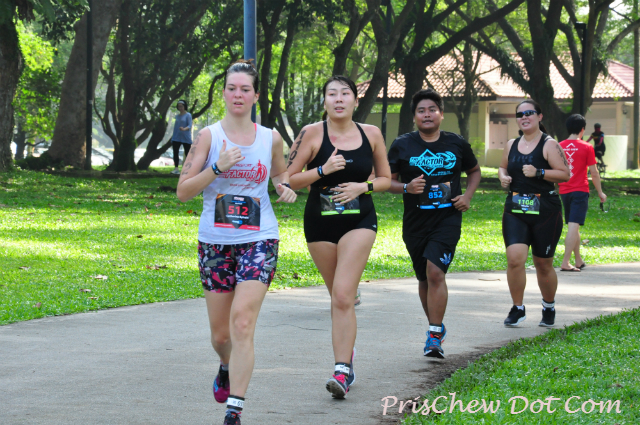
Foot ID can improve your running.
At the same time, the new system enables the analysis of torsional stress in the lower limb and proposes proper support gear such as compression wear for the runner, in addition to the perfect pair of shoes.
My Foot ID session
I had a Foot ID session done at the store and it was conducted by national runner and ASICS sponsored athlete Raviin Kumar and Andy Neo, ASICS Assistant Manager for Education and Training.
First part: 3D construction of the foot
Prior to the test, Andy placed markers on strategic points of my foot, in order for the cameras to detect the foot.
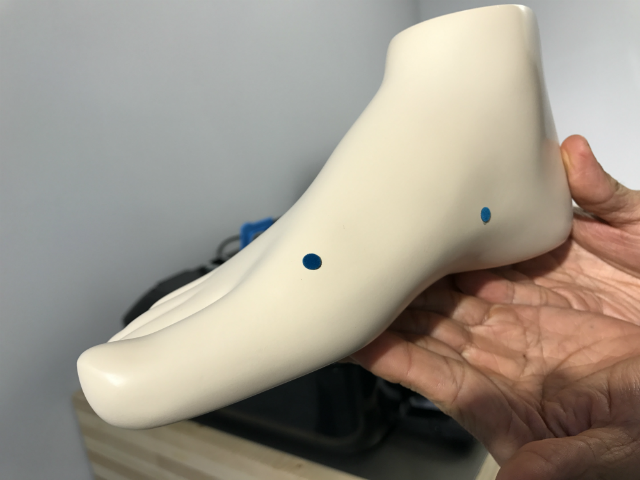
These blue markers were placed at strategic points on my foot. These are markers 1 and 2.
Then the first part of the test had required us to place our foot into a small box-like contraption and keep absolutely still as the eight cameras inside, formed a 3D construction of the foot and ankle, by taking shots of the foot from every angle possible. Through the images, measurements such as the shape, width and length of the feet can be measured.
According to the data, Raviin had explained to me some rather interesting things that I had not realised before about my feet. For example, that my left foot is marginally longer and wider than my right foot, and also that the big toe on my right foot is angled further inwards than it should be.
So due to this, Raviin recommends shoes with a wider toe box for me and also suggested that perhaps I should put toe dividers between my big toe and index toe, to prevent it from bending inwards further.
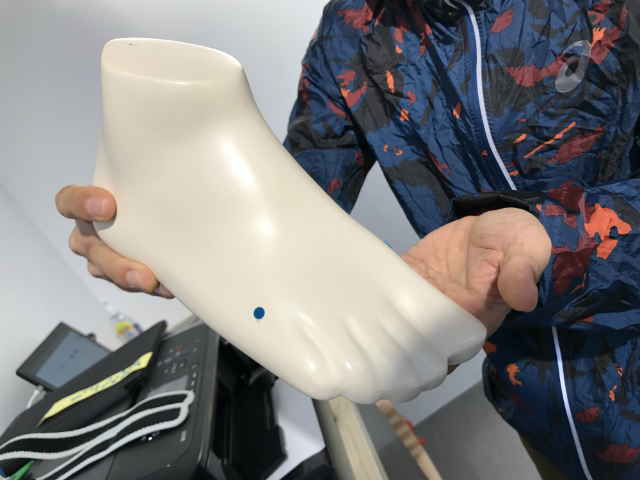
Here is the position of the third marker.
After undergoing this test, I was then asked to complete a questionnaire on my running habits, such as my weekly mileage, my comfortable pace and my personal best timings.
Second Part: Running barefoot on the treadmill
The second part of the test had then required us to run barefoot on the treadmill. In order for me to do this, I had to strap foot pods on my calves as well as my ankles so that the system could detect our running gait and movements.
From behind, a camera would also be filming me running.
The reason for making us run barefoot was that wearing shoes could possibly modify one’s running gait and it would thus no longer be natural.
In order to warm up and get used to the foot pods, I did some light walking on the treadmill before moving into a slow jog. My right foot pod dropped off once, but fortunately that had been before the camera had started officially rolling!
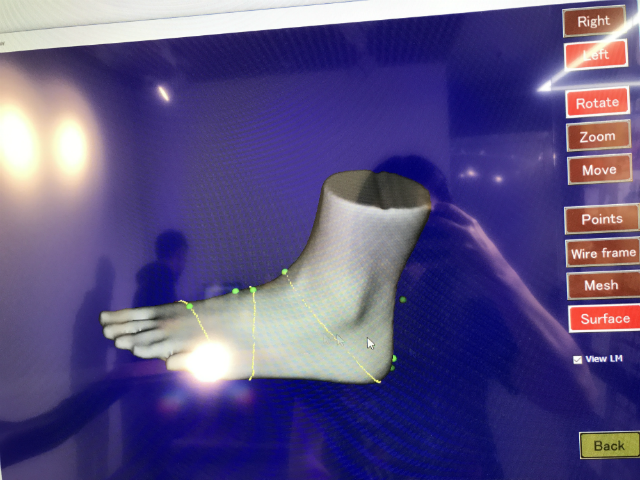
The eight point camera would capture a 3D replica of your foot. This was quite fascinating.
I ran for probably a minute or two before Raviin and Andy were able to get a reading. According to an explantion from Raviin, my test results had showed that I am a forefoot runner and a neutral pronator, with some slight degree of under pronation on my right foot.
Pronation is the dynamic behaviour of the foot and shin during running, and is part of the natural movement of the body that helps the lower leg deal with landing impact. Different types of running shoes are designed for different pronation characteristics.
My running form, according to the test was pretty positive and my leg alignments were fairly balanced, according to Raviin. Having unbalanced leg alignments would typically lead to additional stress on the joints.
Computer Generated Test Results
The test results had recommended for me to use maximum support shoes for a more enjoyable running experience, as well as shoes with good cushioning. It did not recommend racer shoes based on my running profile. This is quite true as I generally do find cushioned shoes to be more comfortable than other types when I am running.
But Raviin told me that I could wear racers if I wanted to run a race specifically to aim for a personal best and I didn’t want the shoes to weigh me down though.
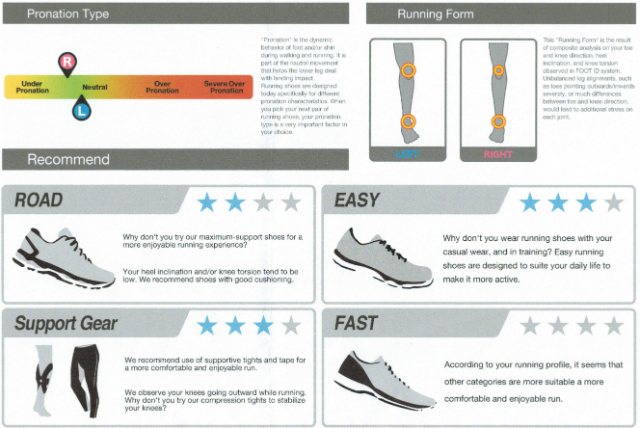
The system would come up with comprehensive computer generated test results. Here are mine.
At the same time, the computer generated results had also recommended compression tights to stabilise my knees, as well as wearing running shoes together with my casual wear as well as during training.
However even though the results had been quite comprehensive, Raviin stressed that the Foot ID is an indicative and not a conclusive advice, and that it should not be considered as medical advice. It is after all, still best to see a podiatrist if there are any issues with the Foot ID results.
Following the conclusion of the Foot ID session, I got a pair of Gel-Quantum 360 Knit from ASICS, of which I will be reviewing in a later blog post.

Leave a Comment